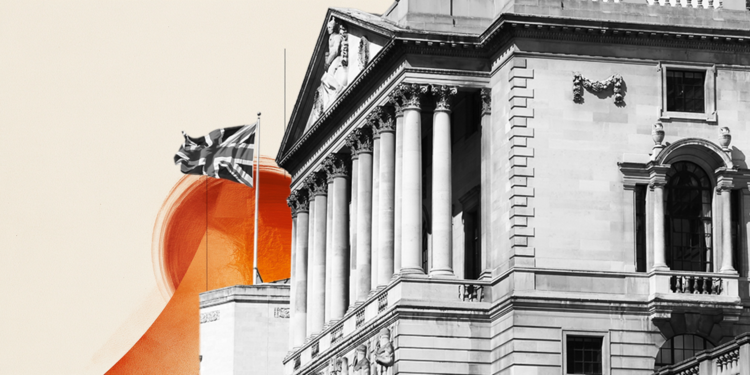With the more aggressive movement of central banks in both the United States and Brazil to try to control inflation in both countries, stocks listed on the stock exchange are losing strength against other investments linked to the basic interest rate or the IPCA (Price Index to the Consumer – Broad), for example.
A survey carried out by investment search engine Yubb pointed out that the most attractive gross yield (discounting account inflation) for the current context is the incentivized debenture, which yields 14.42%. Just below is the LCA, whose return is 12.40%.
The incentivized debenture is a fixed income security issued by private equity companies to raise funds. The amount raised is obligatorily destined to infrastructure works.
The LCA (Letter of Credit for Agribusiness) is a fixed income bond issued by public or private financial institutions in which the amount raised is intended mainly for rural producers.
Priscila Yasbek, analyst at CNN says that the debenture yields more because it is the riskiest investment compared to other options.
The risk is that this investment model does not have a FGC (Credit Guarantee Fund). Thus, if the company that issued the bonds goes bankrupt, the investor runs the risk of running out of money.
What does not happen with the LCA and the CDB (Certificate of Bank Deposit). In other words, in these options, each investor can recover BRL 250,000 per institution via the fund, with a limit of BRL 1 million, every four years, if the company that issued the bonds goes bankrupt.
Another risk related to debentures, points out Toro Investimentos, is that there are chances that the company does not have a positive cash flow or enough to pay the interest. And, with that, the investor may not be able to receive all the agreed money.
Thus, Priscila points out that the Selic Treasury can be an interesting investment for those who want to take advantage of higher interest rates and do not know when they want to redeem the amount.
Among the investment models mentioned by Yubb, savings are the only one that, considering inflation in the account, has a negative yield of 1.59%.
Carlos Macedo, investment allocation specialist at Warren, also states that with geopolitical conflicts, such as the war between Russia and Ukraine, in addition to China’s zero-Covid policy – which continues to affect the global production chain – the high inflation tends to continue, placing IPCA-indexed securities as the best class in terms of performance.
prefixed
The experts interviewed by CNN Brasil Business also highlighted that fixed-rate bonds are worthwhile for periods until the end of this year.
“Longer periods are risky in this scenario, considering that we will likely have further interest rate hikes,” says Fabio Louzada, economist, founder and CEO of Eu me banco school.
According to the Central Bank’s Focus Bulletin released on Monday (2), the financial market’s projection for inflation in 2022 increased from 7.65% to 7.89%. This is the 16th consecutive weekly rise in the median of forecasts for the IPCA.
The bulletin also pointed out that analysts also raised forecasts for the basic interest rate, the Selic , in 2023, from 9% per year to 9.25% per year. This year, the rate is expected to reach 13.25% per year.
Thus, in view of this scenario, Louzada also carried out for the CNN Brasil Business a list in order of preference to invest in the current geopolitical and economic context:
- Postfix;
- Linked to IPCA, if the amount is not withdrawn halfway;
- Short prefix, until 2024
See the bonds and their yields available on the National Treasury website:
I still want the shares
If investors are still interested in taking advantage of opportunities in the stock market, regardless of the global economic scenario, analysts recommended that shareholders stay in Brazil because multiples are cheaper compared to abroad and this is an opportunity to take advantage of the high of commodities.
Mario Mariante, chief analyst at Planner Corretora, pointed out that the price of inputs and raw materials weighed on a good portion of the balance sheets released so far and there is no downward trend in the short term.
Thus, for him, the commodity companies should not leave the radar of investors. It is worth remembering that the Ibovespa is composed of about 33% of companies that work with raw materials.
Vitorio Galindo, head of fundamental analysis at Quantzed, points out that companies in the insurance sector should benefit from the rise in interest rates.
He explains that insurance companies have the money from the premiums they receive and the amount stays in the cash until you have to pay the claim or not (if that happens, the amount is retained in the company’s cash).
“The stopped money is remunerated by the CDI. If the CDI is 2%, the return is very small, but with the CDI at more than 10%, this is very relevant”. Thus, there are companies in the sector that achieve a financial return greater than the operating result itself.
The CDI (Certificado de Depósito Interbancário) is a security issued in transactions carried out between banking institutions.
And, in investments, according to the manager Magnetis, both the certificate and the Selic rate are close, which usually have a difference of 0.10 percentage points. That is, when the basic interest rate rises, the CDI rises consecutively.
Remember the Selic rate
The Monetary Policy Committee (Copom) of the Central Bank (BC) announced, last Wednesday (4), a rise of 1 percentage point in the basic interest rate. Thus, the Selic rate increases from 11.75% per annum (pa) to 12.75% per annum.
With the decision, in line with what was expected by the market, the Copom continues a cycle of increases that began in March 2021 to combat inflation in the country, which closed at 10.06% last year. In the period, the inflation target of 3.75% – which could reach 5.25% – was not met.
According to a survey carried out by the CNN Brasil Business with Michael Viriato, strategist at Casa do Investidor, this is the longest cycle of subsequent highs in history.
Alexandre Espirito Santo, chief economist at Órama, recalls that the Selic rate was at very low levels in the pandemic, and inflation soared from 2021.
“The return to reach the goal [da inflação] It’s taking longer than what we were usually used to experiencing… We’ve never had such a low rate and now we’re going to need more time”.
See the interest rate history since 1996, historical database of the Central Bank:
The analyst of CNN Priscila Yasbek, also recalls that some economists believed that the basic interest rate in Brazil could reach 14%, however, the BC pointed out on Wednesday (4) that it should make an adjustment in a magnitude close to 0.75% or 0.5%.
“What will depend [no momento de subir a taxa Selic, na próxima reunião] is whether the country will continue to import inflation because of the war in Ukraine and the lockdown in China… the Central Bank left the door open so it needs to be more aggressive [e subir 1% ou mais]”.
*With information from Ana Russi, from CNN
Source: CNN Brasil
I am Sophia william, author of World Stock Market. I have a degree in journalism from the University of Missouri and I have worked as a reporter for several news websites. I have a passion for writing and informing people about the latest news and events happening in the world. I strive to be accurate and unbiased in my reporting, and I hope to provide readers with valuable information that they can use to make informed decisions.







